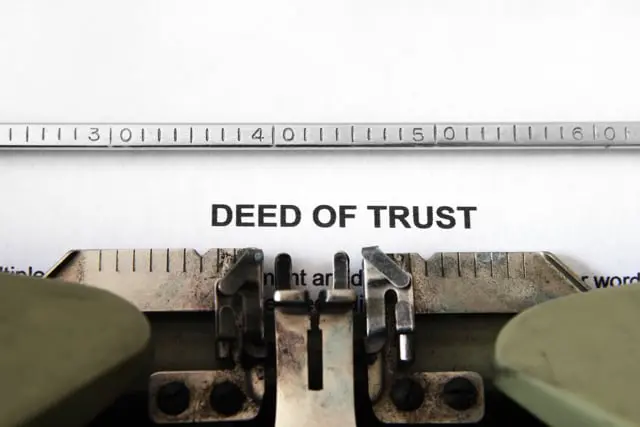Filing for divorce without a lawyer, also known as a pro se divorce, can be a viable option for couples seeking to end their marriage amicably and cost-effectively. This process, while challenging, allows individuals to navigate the legal system independently, potentially saving thousands of dollars in attorney fees. However, it requires a thorough understanding of state-specific divorce laws, meticulous attention to detail, and a willingness to invest time in researching and completing necessary paperwork. This comprehensive guide will walk you through the steps of filing for divorce without a lawyer, highlighting important considerations and potential pitfalls to avoid.
The decision to pursue a divorce without legal representation should not be taken lightly. It is most suitable for uncontested divorces, where both parties agree on all major issues such as property division, child custody, and spousal support. Even in these cases, the process can be complex and emotionally taxing. Before proceeding, it’s crucial to assess your situation honestly and determine if you’re equipped to handle the legal and emotional challenges that may arise.
One of the first steps in filing for divorce without a lawyer is to ensure you meet your state’s residency requirements. These requirements vary by jurisdiction but typically involve living in the state for a specified period before filing. For example, some states require residency for six months, while others may require a year. Failing to meet these requirements can result in your case being dismissed, forcing you to start the process anew.
Once you’ve confirmed your eligibility to file, the next step is to obtain the necessary divorce forms. Many states now offer these forms online through their court websites, making them easily accessible to those pursuing a DIY divorce. However, it’s important to note that while these forms are standardized, they may not cover all aspects of your specific situation. Carefully review each form and ensure you understand what information is required before proceeding.
The cornerstone of your divorce filing will be the petition for dissolution of marriage. This document formally requests the court to end your marriage and outlines your desired outcomes regarding property division, child custody, and support. When completing this form, be as thorough and accurate as possible. Any omissions or errors can lead to delays or complications in your case. If you’re unsure about any section, consider consulting with a legal aid organization or attending a court-sponsored workshop for self-represented litigants.
In addition to the petition, you’ll need to complete several other forms, including financial disclosures. These documents provide a comprehensive overview of your assets, debts, income, and expenses. Transparency is crucial at this stage, as failing to disclose assets or providing inaccurate information can have serious legal consequences. Take the time to gather all relevant financial documents, including bank statements, tax returns, and property valuations, to ensure your disclosures are complete and accurate.
Once you’ve completed all necessary forms, the next step is to file them with the appropriate court. This typically involves submitting the paperwork to the clerk of the court in the county where you or your spouse resides. Be prepared to pay a filing fee, which can vary significantly from one jurisdiction to another. If you cannot afford the fee, you may be eligible for a fee waiver, but you’ll need to provide proof of financial hardship.
After filing, you must serve your spouse with the divorce papers. This step is crucial, as it officially notifies your spouse of the divorce proceedings and starts the clock on their response time. Service of process can be accomplished in several ways, including personal service by a sheriff or process server, certified mail, or voluntary acceptance of service by your spouse. The method you choose should comply with your state’s requirements to ensure the service is legally valid.
If your spouse agrees to the divorce and the terms outlined in your petition, they may file a response indicating their agreement. This scenario is ideal for those pursuing a divorce without a lawyer, as it minimizes the potential for conflict and expedites the process. However, if your spouse contests any aspect of the divorce or fails to respond within the specified timeframe, you may need to navigate more complex legal procedures, potentially necessitating legal assistance.
For couples with children, developing a parenting plan is a critical component of the divorce process. This document outlines how you and your ex-spouse will share parental responsibilities, including custody arrangements, visitation schedules, and decision-making authority for important matters like education and healthcare. Creating a comprehensive and fair parenting plan requires careful consideration of your children’s needs and may benefit from the input of a mediator or family counselor.
Another crucial aspect of divorce proceedings is the division of marital property and debts. In community property states, assets and debts acquired during the marriage are generally split equally between spouses. In equitable distribution states, the division aims to be fair but not necessarily equal. Regardless of your state’s approach, it’s essential to create a complete inventory of your marital assets and liabilities. This includes real estate, vehicles, bank accounts, retirement funds, and any outstanding debts. Be prepared to negotiate with your spouse to reach a mutually acceptable division.
If you or your spouse is seeking alimony, also known as spousal support, you’ll need to address this in your divorce filings. The determination of alimony depends on various factors, including the length of the marriage, each spouse’s earning capacity, and the standard of living established during the marriage. While some states have guidelines for calculating alimony, others leave it to the discretion of the judge. If you’re requesting alimony or expect to pay it, carefully research your state’s laws and consider seeking advice from a financial professional to understand the long-term implications.
Throughout the divorce process, it’s crucial to maintain detailed records of all communications, agreements, and financial transactions related to your case. This documentation can prove invaluable if disputes arise or if you need to modify agreements in the future. Consider creating a dedicated file or digital folder to organize all divorce-related paperwork, including copies of filed documents, correspondence with your spouse or the court, and any relevant financial records.
As you navigate the divorce process without a lawyer, be prepared for potential delays and setbacks. Court schedules can be unpredictable, and processing times for paperwork can vary. Additionally, if your spouse contests any aspect of the divorce or new issues arise, you may need to attend hearings or mediation sessions. Maintaining patience and flexibility throughout the process can help you manage stress and avoid hasty decisions that could negatively impact the outcome of your divorce.
One often overlooked aspect of DIY divorce is the emotional toll it can take. Without the buffer of an attorney, you’ll be directly handling all aspects of your case, which can be emotionally draining. Consider seeking support from a therapist or joining a divorce support group to help you cope with the emotional challenges. Remember that taking care of your mental health is just as important as managing the legal aspects of your divorce.
If your divorce involves complex financial assets, such as businesses, investments, or retirement accounts, you may need to consult with financial professionals even if you’re handling the legal aspects on your own. A certified divorce financial analyst can help you understand the long-term implications of property division and support agreements. Similarly, if you have significant retirement assets, you may need a qualified domestic relations order (QDRO) to divide these accounts without incurring penalties. While drafting a QDRO without a lawyer is possible, it’s a complex document that may benefit from professional review.
For those filing for divorce without a lawyer, understanding the concept of distribución equitativa is crucial. This principle, used in most states, aims to divide marital property fairly, though not necessarily equally. Factors considered in equitable distribution include each spouse’s financial situation, contributions to the marriage (including non-financial contributions like homemaking), and future earning potential. When proposing a property division in your divorce filings, be prepared to justify your proposal based on these factors.
Another important consideration in DIY divorce is the handling of joint debts. In the eyes of creditors, both spouses remain responsible for joint debts regardless of who agrees to pay them in the divorce settlement. To protect your financial future, consider closing joint accounts and transferring balances to individual accounts where possible. If one spouse agrees to take on a joint debt, explore options for refinancing in that spouse’s name alone. Addressing these issues in your divorce agreement can help prevent future financial complications.
For couples with children, understanding the difference between custodia legal y physical custody is essential. Legal custody refers to the right to make important decisions about the child’s upbringing, including education, healthcare, and religious instruction. Physical custody determines where the child primarily resides. In many cases, parents share legal custody even if one parent has primary physical custody. When developing your parenting plan, clearly outline how these responsibilities will be shared to avoid future conflicts.
If domestic violence has been a factor in your marriage, proceeding with a divorce without a lawyer requires extra caution. Many states have specific provisions for cases involving domestic abuse, including expedited procedures and additional protections for the victim. If you’re in this situation, consider reaching out to domestic violence support organizations for guidance. They can provide resources and may be able to connect you with pro bono legal services to ensure your safety and rights are protected throughout the divorce process.
As you prepare to file for divorce without a lawyer, familiarize yourself with your state’s waiting period requirements. Many states impose a mandatory waiting period between filing for divorce and when it can be finalized. This period can range from 30 days to several months, depending on the jurisdiction. Understanding this timeline can help you set realistic expectations for the duration of your divorce process and plan accordingly.
One aspect of divorce that self-represented litigants often struggle with is the drafting of the final divorce decree. This document, which must be approved by a judge, outlines all the terms of your divorce settlement, including property division, custody arrangements, and support obligations. While many courts provide templates for divorce decrees, customizing the document to accurately reflect your specific agreements is crucial. Consider having a legal aid attorney or document review service look over your decree before submitting it to the court to ensure it’s complete and legally sound.
For those filing for divorce without a lawyer, understanding the concept of mediación can be beneficial. Many courts encourage or even require couples to attempt mediation before proceeding to trial. Mediation involves working with a neutral third party to resolve disputes and reach agreements on various aspects of your divorce. Even if you’re handling your divorce pro se, participating in mediation can help you and your spouse overcome impasses and develop mutually acceptable solutions, potentially saving time and reducing conflict.
Another important consideration in DIY divorce is the handling of tax implications. The division of assets, alimony payments, and changes in filing status can all have significant tax consequences. For example, the transfer of property between spouses as part of a divorce settlement is generally not taxable, but selling assets to facilitate division may trigger capital gains taxes. Additionally, recent changes to tax laws have altered how alimony is treated for tax purposes. Researching these issues or consulting with a tax professional can help you make informed decisions and avoid unexpected tax liabilities post-divorce.
For couples with significant assets or complex financial situations, considering the use of a forensic accountant may be worthwhile, even in a DIY divorce. These professionals can help uncover hidden assets, verify income for support calculations, and provide valuable insights into the true value of business interests or other complex assets. While hiring a forensic accountant represents an additional expense, their expertise can be invaluable in ensuring a fair and comprehensive financial settlement.
As you navigate the divorce process without a abogado, be aware of the potential for post-judgment modifications. Life circumstances change, and you may need to modify aspects of your divorce decree in the future, such as child support or custody arrangements. Understanding the grounds for modification and the process for requesting changes can help you prepare for potential future adjustments to your divorce agreement.
En conclusión, filing for divorce without a lawyer is a challenging but achievable process for those willing to invest time and effort in understanding legal procedures and requirements. By thoroughly researching your state’s laws, meticulously preparing required documents, and maintaining open communication with your spouse, you can successfully navigate the divorce process independently. However, it’s important to recognize the limitations of this approach and be prepared to seek professional help if complex issues arise or if you feel overwhelmed by the process. Remember, the goal is not just to complete the divorce but to do so in a way that protects your rights and sets you up for a stable future post-divorce.
- https://hellodivorce.com/divorce-advice/how-to-file-an-uncontested-divorce-without-a-lawyer
- https://www.arizonalawgroup.com/blog/diy-divorce/
- https://www.courts.state.hi.us/docs/1FP/UncontestWChildren.pdf
- https://bastinelaw.com/2024/03/15/3-common-risks-to-avoid-when-filing-for-divorce-without-an-attorney/
- https://themckinneylawgroup.com/common-challenges-in-uncontested-divorce-and-how-to-overcome-them/
- https://divorce.com/hawaii-online-divorce/
- https://divorce.com/blog/diy-divorce/
- https://www.rcdvcpc.org/resources/self-represented-litigants-series.html
- https://selfhelp.courts.ca.gov/divorce/start-divorce/forms
- https://www.gavel.io/resources/top-5-best-online-divorce-services-of-2024








